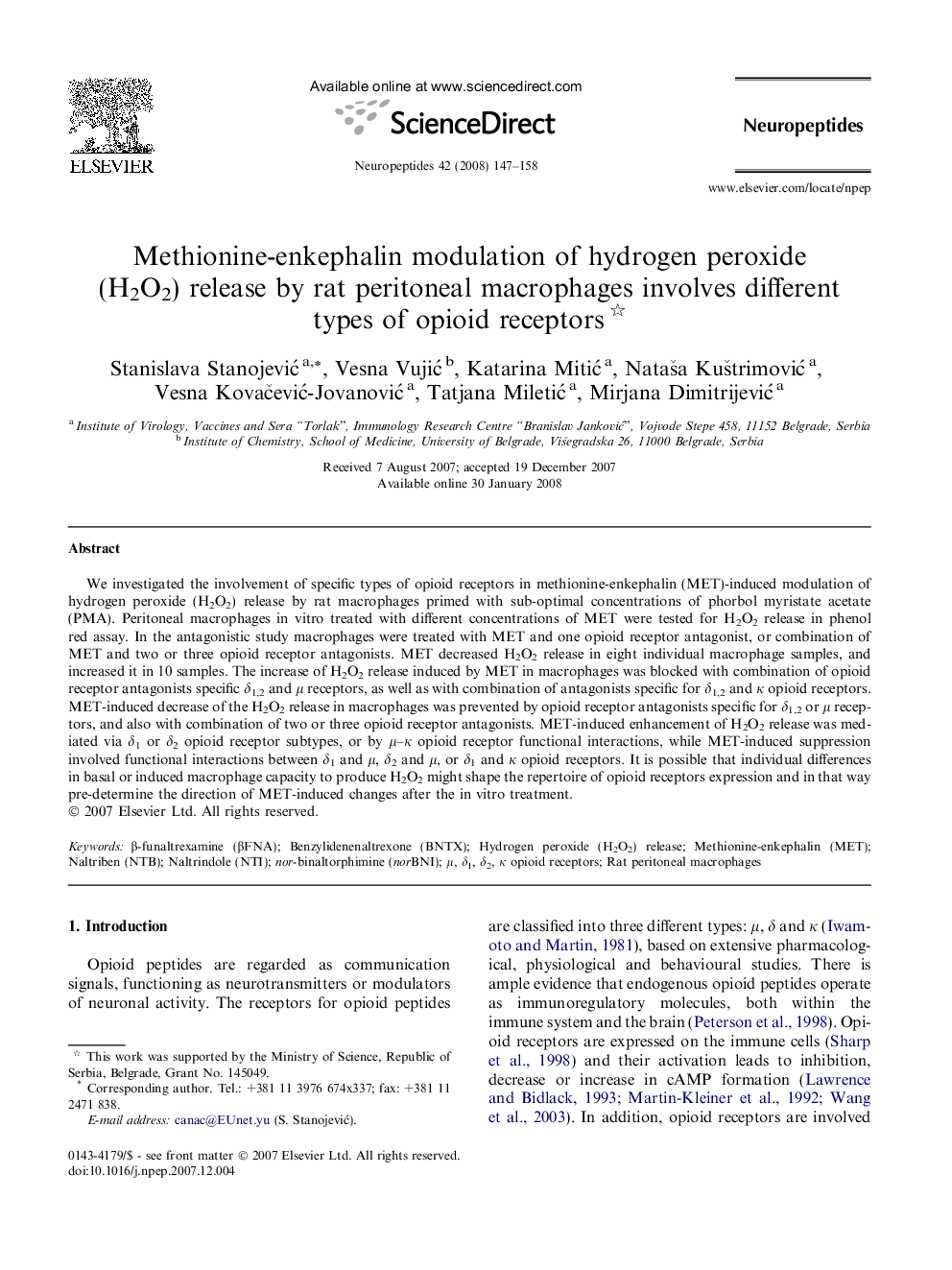| Article ID | Journal | Published Year | Pages | File Type |
|---|---|---|---|---|
| 2808625 | Neuropeptides | 2008 | 12 Pages |
We investigated the involvement of specific types of opioid receptors in methionine-enkephalin (MET)-induced modulation of hydrogen peroxide (H2O2) release by rat macrophages primed with sub-optimal concentrations of phorbol myristate acetate (PMA). Peritoneal macrophages in vitro treated with different concentrations of MET were tested for H2O2 release in phenol red assay. In the antagonistic study macrophages were treated with MET and one opioid receptor antagonist, or combination of MET and two or three opioid receptor antagonists. MET decreased H2O2 release in eight individual macrophage samples, and increased it in 10 samples. The increase of H2O2 release induced by MET in macrophages was blocked with combination of opioid receptor antagonists specific δ1,2 and μ receptors, as well as with combination of antagonists specific for δ1,2 and κ opioid receptors. MET-induced decrease of the H2O2 release in macrophages was prevented by opioid receptor antagonists specific for δ1,2 or μ receptors, and also with combination of two or three opioid receptor antagonists. MET-induced enhancement of H2O2 release was mediated via δ1 or δ2 opioid receptor subtypes, or by μ–κ opioid receptor functional interactions, while MET-induced suppression involved functional interactions between δ1 and μ, δ2 and μ, or δ1 and κ opioid receptors. It is possible that individual differences in basal or induced macrophage capacity to produce H2O2 might shape the repertoire of opioid receptors expression and in that way pre-determine the direction of MET-induced changes after the in vitro treatment.
